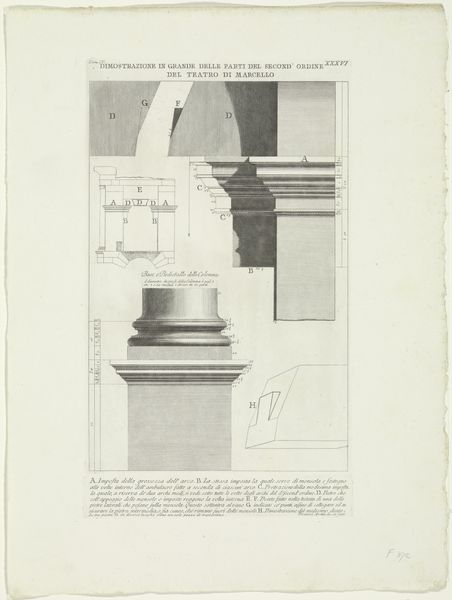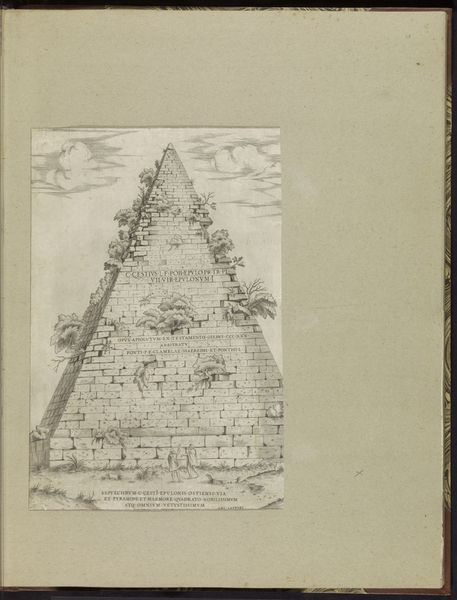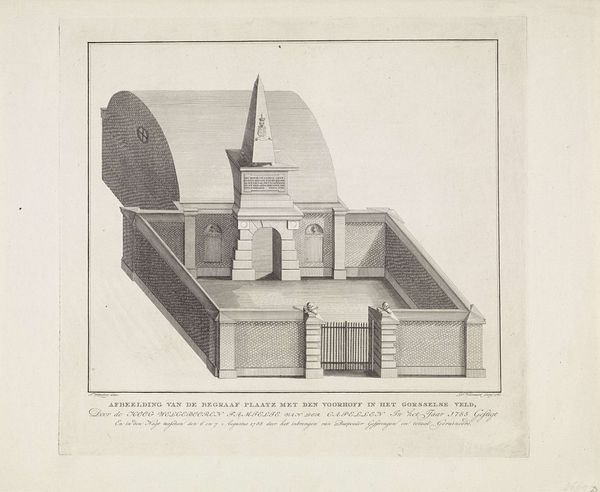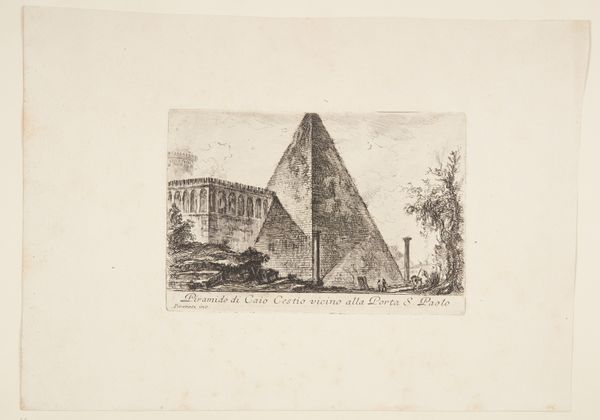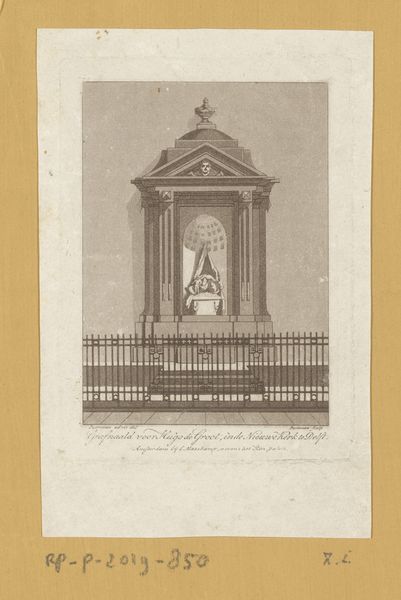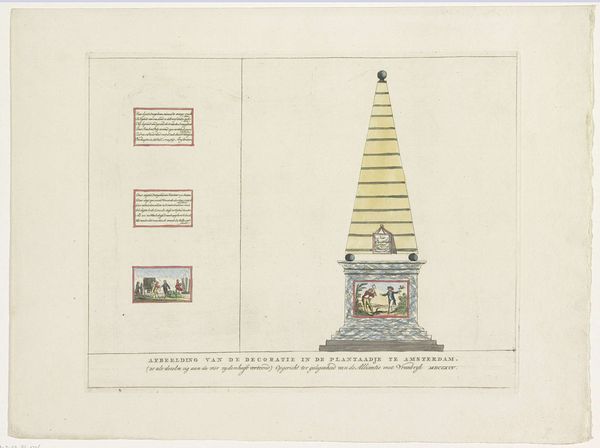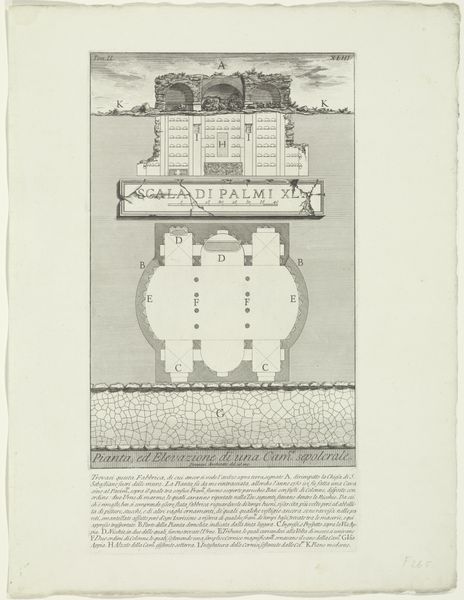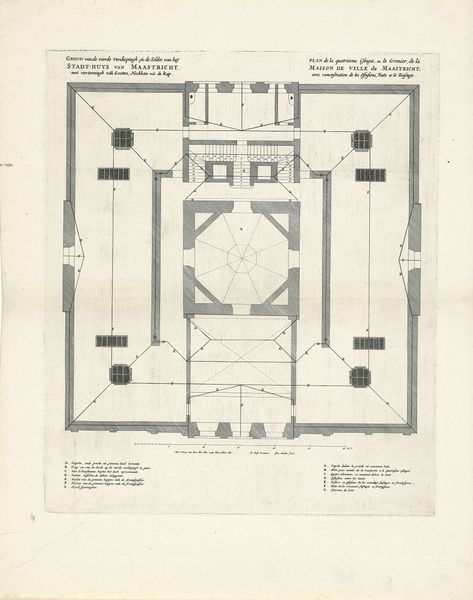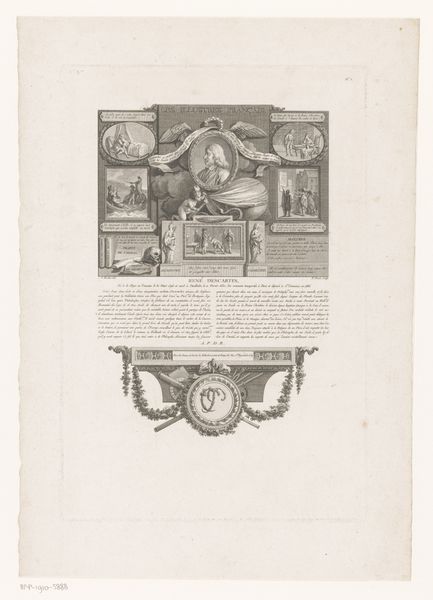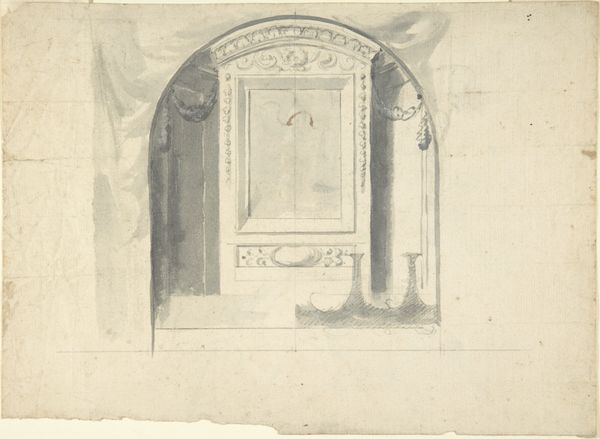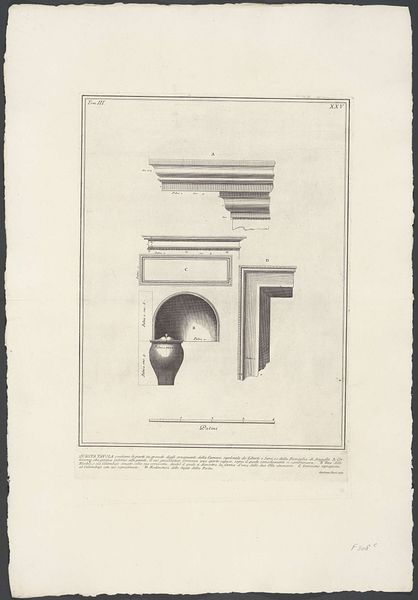
Doorsnede van de Piramide van Cestius te Rome c. 1756 - 1757
0:00
0:00
print, etching, intaglio, engraving, architecture
#
neoclacissism
#
ink paper printed
# print
#
etching
#
intaglio
#
pencil sketch
#
landscape
#
geometric
#
line
#
cityscape
#
history-painting
#
engraving
#
architecture
Dimensions: height 320 mm, width 235 mm, height 93 mm, width 235 mm
Copyright: Rijks Museum: Open Domain
Editor: This is Giovanni Battista Piranesi's "Doorsnede van de Piramide van Cestius te Rome," created around 1756-1757. It’s an etching, showing a cross-section and elevation of the pyramid. It's so precise, almost clinical, but the subject matter gives it a kind of ancient grandeur. What strikes you when you look at this? Curator: What I find compelling is Piranesi's layering of archaeological documentation with his own artistic interpretation. He’s not just recording the pyramid; he’s also commenting on Rome’s layered history, its relationship to power and empire, wouldn’t you agree? Think about the Pyramid of Cestius itself: an Egyptian-style tomb built for a Roman magistrate. How does that blend of cultures speak to the larger power dynamics in play? Editor: I see what you mean. It's not just about Roman history, but how Rome absorbed and reinterpreted other cultures. So, the clean lines and detailed rendering aren't just about accuracy; they also suggest a kind of intellectual control over the past? Curator: Precisely. And consider the social context. Piranesi was working during the Enlightenment, a period obsessed with reason and order. He presents a 'rational' view of an ancient structure. But, there’s a tension here. The pyramid itself is a symbol of death and the exotic. Can you see the way Piranesi invites us to contemplate the legacy of colonialism, the impulse to categorize, document, and ultimately possess the past? Editor: I hadn’t thought about it in those terms. I was focused on the Neoclassical style, but now I realize the style reinforces those themes of control and rationality you mentioned. It’s almost like he’s dissecting the past, trying to understand it from a modern, European perspective. Curator: Exactly. And that perspective, as we now recognize, is inherently shaped by its own biases and power structures. This print invites us to question the very act of historical interpretation and who gets to write the narrative. Editor: That gives me so much to think about, it completely changed how I understand the print, from a technical exercise to a document on cultural interaction. Curator: That's why looking closely at historical context matters when exploring even the most seemingly straightforward images.
Comments
No comments
Be the first to comment and join the conversation on the ultimate creative platform.
